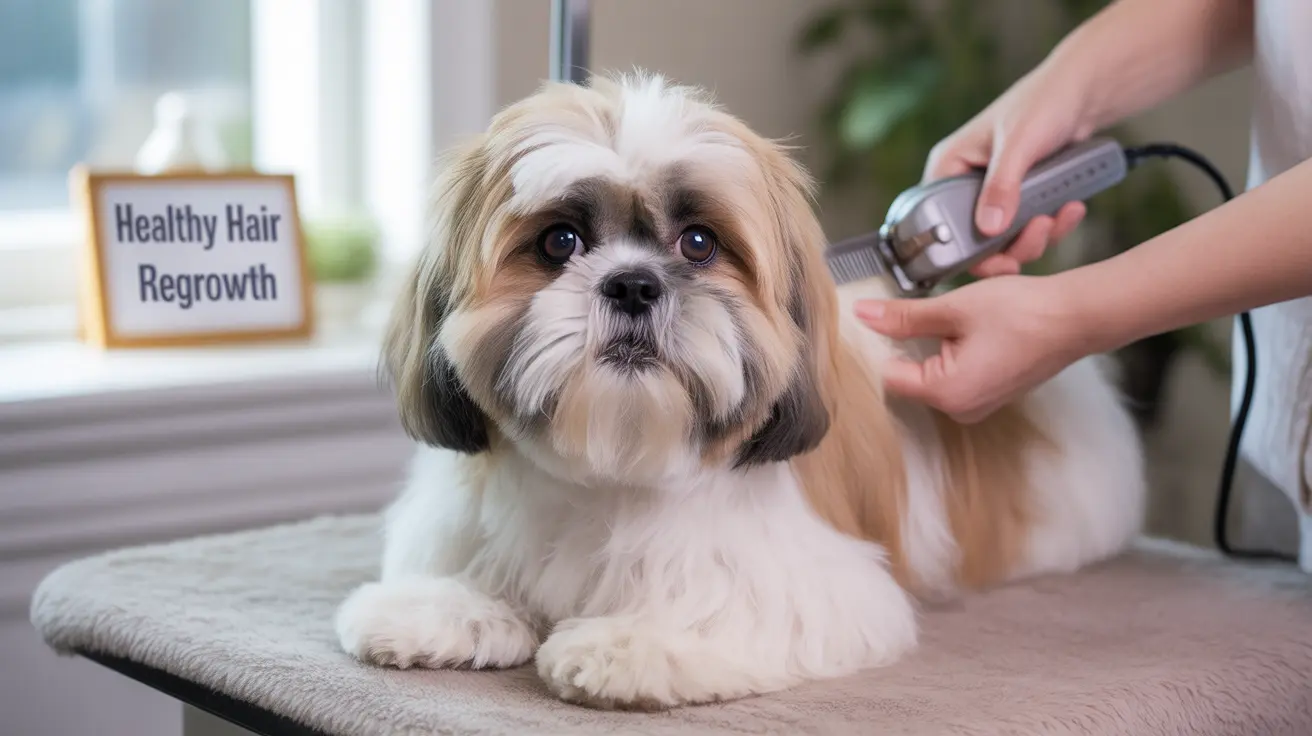Understanding how fast dog hair grows is crucial for pet owners, especially after grooming, medical procedures, or when dealing with hair loss. While the rate of hair growth varies significantly among breeds and individual dogs, there are some general patterns and factors that influence the regrowth process.
In this comprehensive guide, we'll explore the science behind dog hair growth, typical regrowth timelines, and the various factors that can affect how quickly your dog's coat returns to its full glory.
Understanding the Dog Hair Growth Cycle
Dog hair growth follows a predictable cycle with four distinct phases. Each phase plays a crucial role in determining how quickly your dog's hair will grow back:
The Active Growth Phase (Anagen)
During this phase, new hair actively grows from the follicle. Depending on the breed, this phase can last anywhere from 30 days to over a year, significantly impacting overall growth rate and final hair length.
The Transition Phase (Catagen)
This brief phase marks the end of active growth. The hair follicle begins to shrink, though the hair itself remains in place. This phase typically lasts just a few weeks.
The Resting Phase (Telogen)
The hair stops growing but stays anchored in the follicle. This phase can last several months, particularly in breeds with medium-length coats.
The Shedding Phase (Exogen)
Old hairs fall out, making way for new growth to begin. This process is crucial for maintaining healthy coat renewal.
Typical Growth Rates and Timelines
Most dogs' hair grows at an average rate of 0.5 to 1.25 centimeters per month. However, several factors influence this rate:
- Breed type and genetics
- Overall health status
- Nutrition quality
- Environmental conditions
- Age and hormonal balance
Factors Affecting Hair Growth Speed
Breed-Specific Characteristics
Different breeds have vastly different hair growth patterns. For example, Poodles and Shih Tzus have hair that grows continuously, while double-coated breeds like Huskies and German Shepherds have more complex growth cycles.
Health and Nutrition
Proper nutrition is essential for healthy hair growth. Dogs need adequate protein, vitamins (especially B vitamins), and minerals for optimal hair growth. Any nutritional deficiencies can significantly slow down the process.
Environmental Factors
Seasonal changes, stress levels, and living conditions can all impact hair growth rates. Many dogs naturally shed and regrow their coats based on seasonal patterns.
Tips for Supporting Healthy Hair Growth
To promote optimal hair growth in your dog:
- Provide a balanced, nutrient-rich diet
- Maintain regular grooming practices
- Avoid unnecessary shaving
- Control parasites and skin conditions
- Reduce stress when possible
- Consider supplements if recommended by your vet
When to Seek Veterinary Care
Consult your veterinarian if you notice:
- Unusually slow hair regrowth
- Patchy or uneven growth
- Signs of skin inflammation or infection
- Excessive shedding
- Bald spots that don't show signs of regrowth
Frequently Asked Questions
How fast does dog hair typically grow and how does this vary by breed?
Dog hair typically grows 0.5-1.25 centimeters per month, but this varies significantly by breed. Long-haired breeds like Yorkies may experience faster growth, while short-haired breeds have slower visible growth rates.
What are the main stages of the dog hair growth cycle and how do they affect regrowth timing?
The four main stages are anagen (growth), catagen (transition), telogen (rest), and exogen (shedding). The length of each phase determines how quickly hair regrows, with the anagen phase being most crucial for growth speed.
How long does it take for dog hair to fully grow back after shaving or hair loss?
Full regrowth typically takes 3-6 months, though it can take up to a year for some breeds. Double-coated breeds may take longer and might experience changes in coat texture initially.
What factors like health, nutrition, or stress can influence how quickly my dog's hair grows back?
Key factors include overall health, dietary nutrition, stress levels, hormonal balance, and any underlying medical conditions. Poor nutrition or high stress can significantly slow regrowth.
Why might some dog breeds experience slower or patchy hair regrowth after shaving or illness?
Some breeds are prone to post-clipping alopecia, where hair grows back slowly or patchily. Hormonal conditions, genetics, and the type of coat can all contribute to irregular regrowth patterns.






